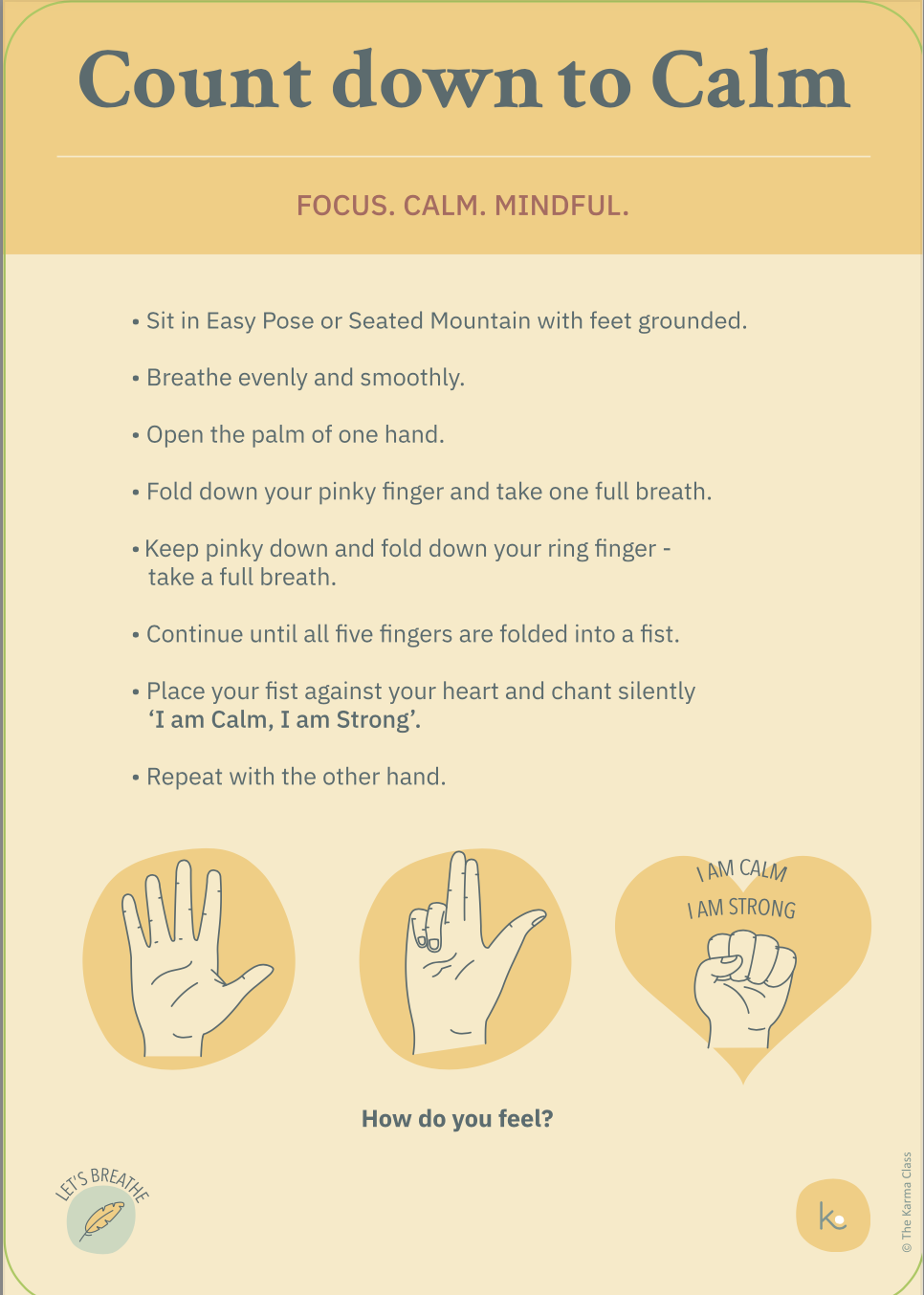But we aren’t taught to breathe. Not at home or at school. And sadly, from a very young age, we unlearn our natural way of diaphragmatic breathing and, as we slip into the busyness of life, our breathing becomes shallower and shallower, hovering mainly in our chest.
Research tells us – and so does our wiser self – that breathing more mindfully and deeply is critical for calming our nervous system, regulating our emotions, and relieving all the negative effects of stress and anxiety – and there’s no shortage of those.
When we introduce children to their breath, we introduce them to the MAGIC that lives inside of them and they begin to understand how this magic helps them to feel less worried, less angry, less scared. How it can help them to feel strong and courageous and calmer.
Especially during these challenging times, breathing can help children to self-regulate, self soothe, reduce anxiety, ward off stress, improve focus and performance, and create a healthy and well-rounded – emotionally and physically – young person.
It’s also SUPER easy to teach and weave into everyday life!

One of the 13 Karma Classroom activity cards.
Here's eight ways that breathing mindfully will benefit you and your classroom:
1. Improves your wellbeing
When you teach your children different breathing exercises – to either calm or energise – it helps to reduce your stress levels and improve your overall well-being. This ultimately increases job enthusiasm and satisfaction, and contributes to a better work-life balance.
2. Enhances teacher-student relationships
Teaching breathing exercises is a great way for you to connect with your students and build authentic, meaningful relationships based on kindness, compassion and empathy.
3. Promotes a positive and supportive classroom environment
Once students learn how their magical breath can help them to regulate their emotions and manage stress and those ‘bigger feelings’ in a healthier way, your classroom climate will become calmer, and your students will be more compassionate and supportive towards
eachother.
4. Reduces minor incidents and classroom disruptions
Once children understand how their magical breath can help to regulate their behaviour and reduce impulsive responses, you’ll notice fewer classroom disruptions, a reduction in minor incidents and improved academic performance.
5. Encourages student engagement
Breathing exercises help increase students' enthusiasm and active participation in the classroom, leading to more inspired learning, improved learning outcomes and academic success.
6. Improves classroom management
By teaching breathing exercises, you’ll feel more equipped to manage challenging classrooms situations and to create a calmer learning environment with less disruptions that may send you off course.
7. Create the space for present moment awareness and inspired learning
Children cannot learn when they are distracted and feeling angry, sad, anxious, nervous or scared. Teaching them how to breathe mindfully helps them to pause, regulate their nervous system and find that ‘just right space’ between calm and alert. It is within this
present moment awareness that inspired learning takes place.
8. Enables teachers to better support students with anxiety or ADHD
Breathing exercises act as a natural relaxant for all children and by providing students with the necessary tools to manage their emotions and attention, you can better support those with anxiety or ADHD, leading to improved social /emotional skills, classroom
performance and overall wellbeing.
So what’s all the fuss? No fuss! Just 60 seconds of calm, smooth breathing and you’ll feel the big difference it makes to you, your students and your classroom climate.














